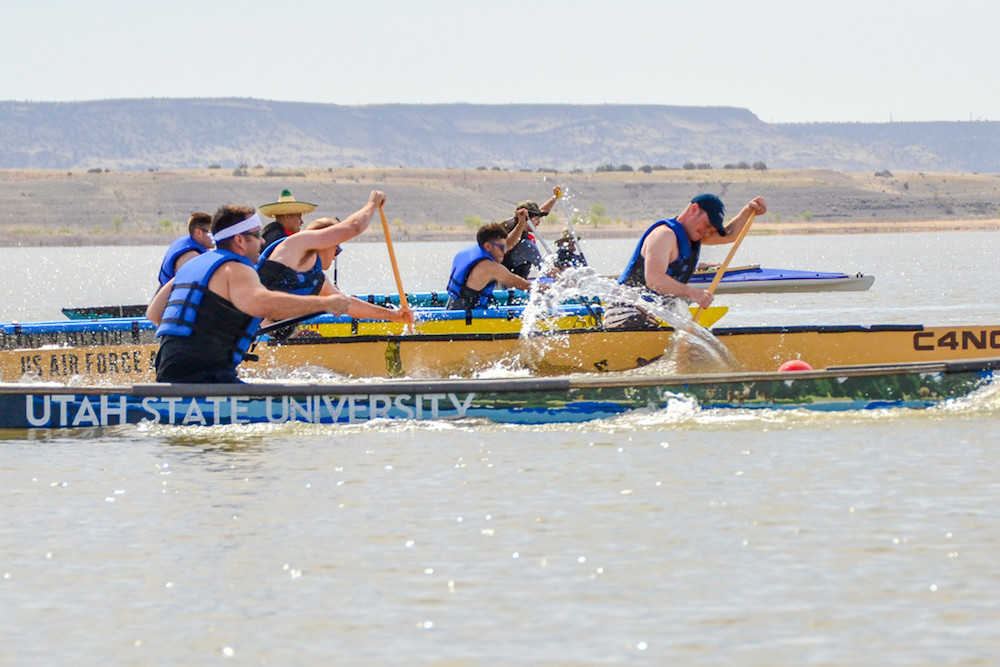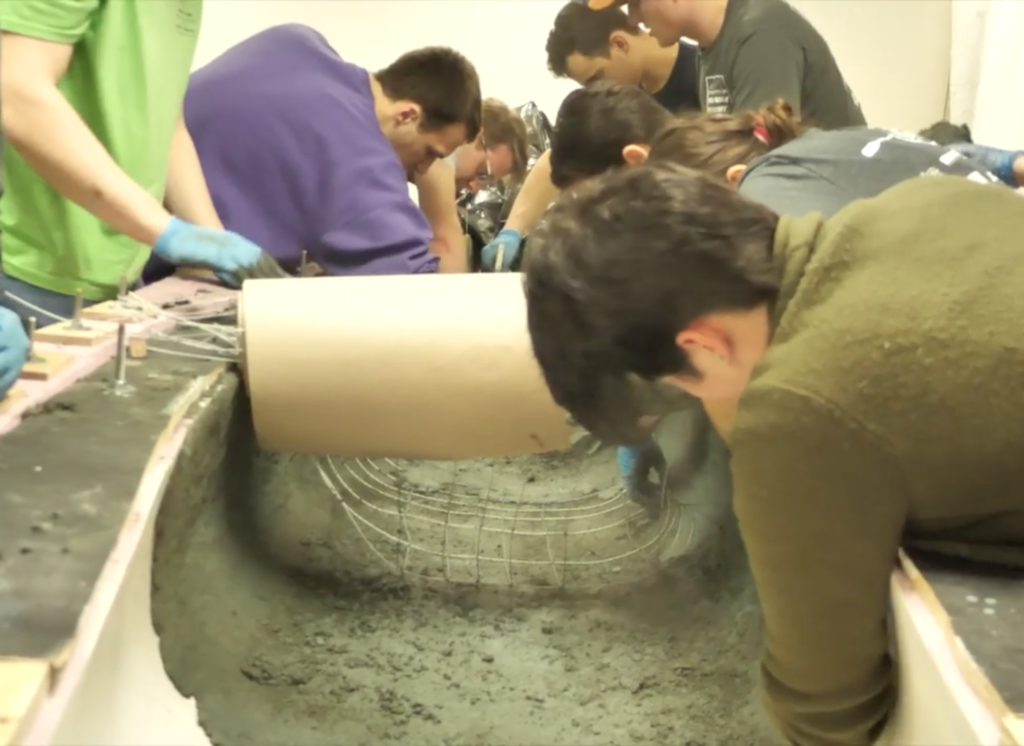
[Image above] United States Air Force cadets competed in the 2015 American Society of Civil Engineers (ASCE) Rocky Mountain Student Conference concrete canoe competition. ASCE has held annual concrete canoe competitions since 1988. Credit: US Air Force
When I think of summer, one activity that immediately comes to mind is canoeing. Once warm weather sets in, my family will rent a canoe and pile everyone—including the collie—into the boat, and we’ll spend an afternoon paddling around the lake.
As I step into these rented canoes, I generally feel safe in the knowledge that the boats will float. They are usually made of aluminum, plastic, or composite materials—materials that are lightweight and so have no problem floating on water (as long as there are no debilitating cracks or holes).
But students attending one of the 19 student conferences hosted by the American Society of Civil Engineers (ASCE) are likely a bit more anxious stepping into the canoes they created to compete in the annual ASCE National Concrete Canoe Competition!
Every year since 1988, ASCE has held concrete canoe competitions for students during their regional student conferences, which take place all across the United States. One team from each conference will qualify to compete in the national competition, which this year takes place June 6–8 at the Florida Institute of Technology.
Wait a minute—concrete can float? If that took you off guard, think about large cargo ships for a moment. Cargo ships are generally made from steel, and steel is around three times denser than concrete!

How is this possible? Even though steel and (some) concretes are denser than water, the average density of a boat made from these materials is lower. Why? Because the majority of a ship’s volume consists of air, its overall density is less than that of a solid steel or concrete block—and less than that of water. Fill the ship with water, however, and it will sink.
Notice, though, that I said “some” concretes. While the concrete used to create ships during the world wars was quite dense, concrete is a composite material. As ASCE member Kelly Doyle explains in her blog, depending on the type of cement and aggregates used to create concrete, it is possible to create a concrete that is less dense than water!
“Cement is about three times as dense as water and aggregates are generally about twice as dense as water,” Doyle explains. “What we do is remove the aggregates and replace them with very small recycled glass beads (some are about 10% the density of water) to decrease the overall weight of the concrete. The end result is a concrete that is light-weight and relatively durable.”
Creating a lightweight concrete is an imperative for ASCE students if they wish to survive the “dunk test.” Before racing, canoes are submerged completely underwater and must float back up within two minutes. If they do not, additional floatation devices (such as nonstructural foam pieces) can be added, but the team will receive a penalty on their design score. (Check out the successful completion of a dunk test by University of Nebraska Omaha students on Twitter!)
Of course, finding a perfect mixture of cement and aggregates that results in a lightweight concrete is only one step in the process of designing a fully functional concrete canoe. In today’s video, Doyle walks us through the steps that ASCE students follow when creating their canoes.
With the national competition a little over a month away, regional competitions are in full swing. And California Polytechnic State University—national winner of the last two years—again made it through the qualifying round. Do you think this success already “cemented” their national victory? We’ll have to keep our eyes peeled for the competition in June!
Credit: Kelly Doyle, YouTube
